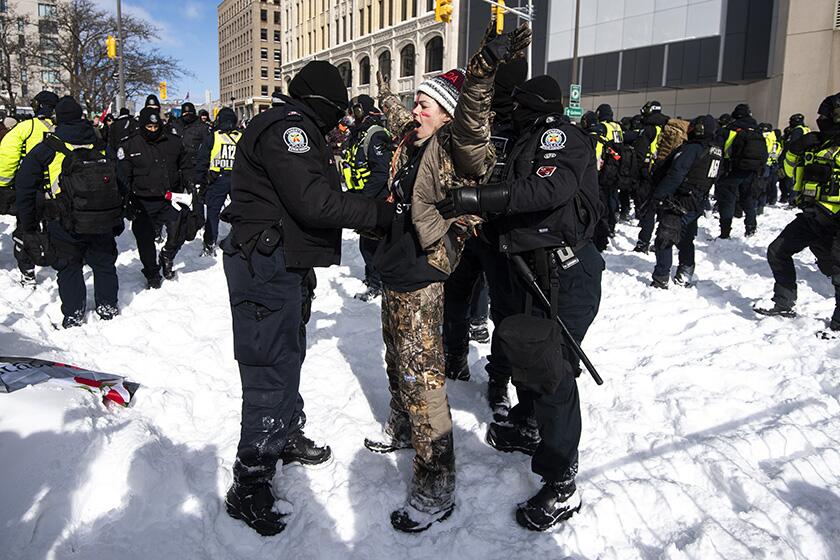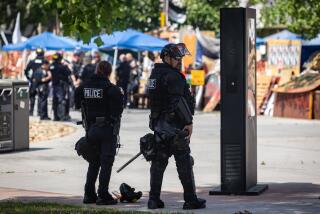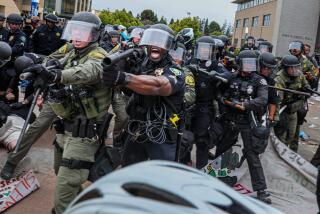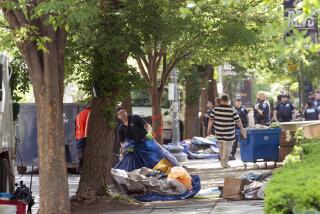Canadian police push back COVID protesters in bid to end siege
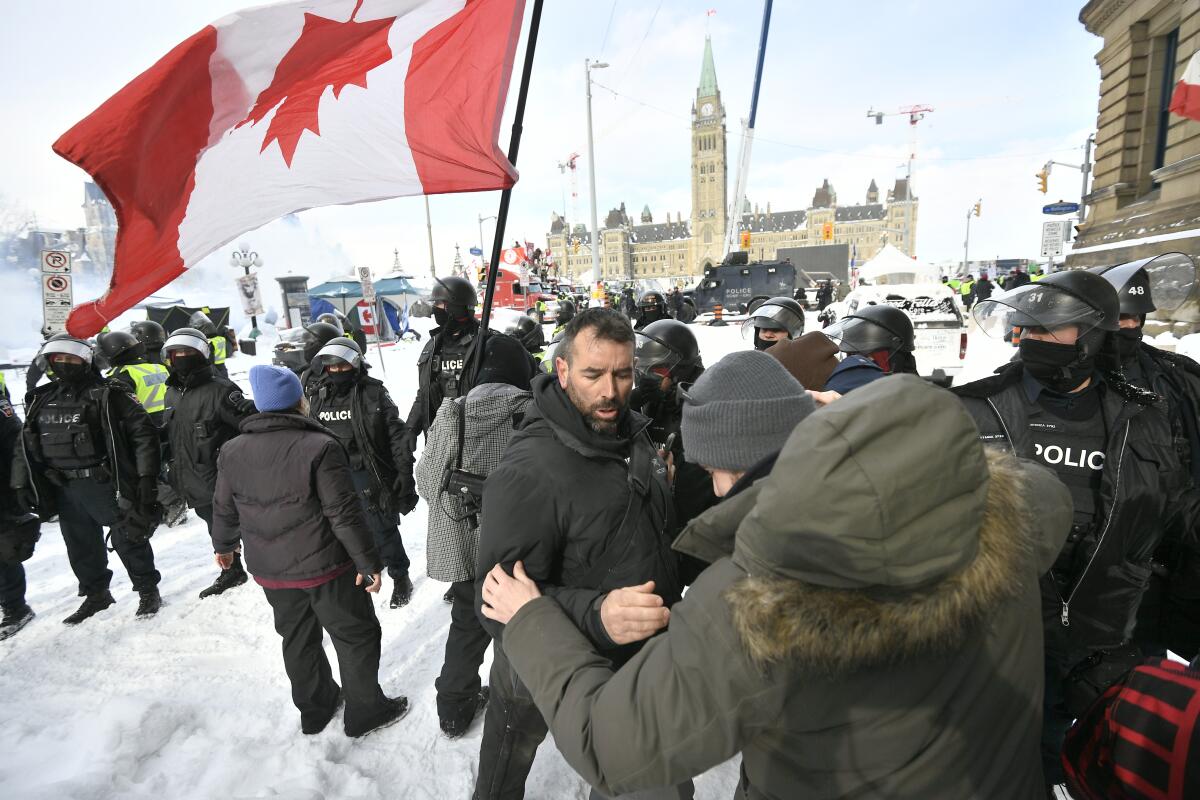
OTTAWA — Police moved forcefully Saturday to break up trucker-led protests that have paralyzed the center of the Canadian capital for more than three weeks and became a worldwide symbol for opposition to pandemic health and safety restrictions.
By day’s end, authorities had managed to clear much of the parliamentary district — where hundreds of trucks had been parked as part of the self-styled “Freedom Convoy” — and had pushed most protesters from Wellington Street, the main thoroughfare on Parliament Hill.
Ottawa police said they had arrested 170 people and ordered the towing of 53 vehicles after the second full day of the operation. Authorities reported no major injuries in what has been called one of the most extensive police operations in recent Canadian history.
The hundreds of trucks that had snarled traffic and seemed an immovable force only two days ago were mostly gone, either towed or driven away by owners who decided to call it quits. Banks acting on emergency legal powers meant to thwart the protests had begun freezing accounts of truckers and others tied to the convoy, according to law enforcement authorities.
However, officials said it was still too early to declare the blockade ended, as hundreds of protesters — many waving Canadian flags — continued to confront police and march through downtown.
“This is not over by a long shot,” Ottawa Mayor Jim Watson told Canada’s CTV news outlet. “It’s almost these gangs wandering through different parts of the neighborhood. My message to them continues to be: Go home.“
Most of the protesters are from rural and western areas hostile to the Liberal Party of Prime Minister Justin Trudeau, the chief target of demonstrators’ ire. The blockades here and at Canadian-U.S. border crossings have proved a major challenge for the administration of Trudeau, who invoked a never previously used emergency statute that allows authorities to ban certain public gatherings, among other powers.
Many protesters in Ottawa vowed to stay on, even as the truckers — the symbolic heart of the protests — were pulling out or seeing their vehicles impounded.
“I hope we got our message through,” said one demonstrator, David Hiscock, 28, a machinist from Ontario. “As far as I’m concerned, everything the police are doing now is illegal. We have a right to be here.”
He was among scores of protesters who confronted lines of police decked out in riot gear as wind-whipped gusts of snow enveloped the streets.
The methodical police advance, including military-style armored vehicles and mounted police units on horseback, was an extraordinary scene in this normally laid-back city. Smoke arose from the streets outside the stately Parliament complex as police and protesters skirmished, though police said no tear gas was deployed and reported seizing smoke grenades from protesters. Police tactical teams breached some trucks, forcing their doors open, and in some cases used pepper spray.
Ottawa is known for ice skaters on the frozen Rideau Canal and a generally more genteel style of politics than that in the United States. Many living near the parliamentary district say they have been living in a near state of siege, enduring all-night horn-honking and diesel fumes from idling vehicles.
“To downtown residents, we are focused on your safety,” Ottawa’s interim police chief, Steve Bell, told reporters. “We are not going anywhere until you have your streets back.”
The convoy movement started as a protest against Canada’s vaccine mandate for cross-border truckers but soon expanded into a broader movement against all COVID-19 health and safety restrictions and Trudeau’s government.
The prime minister labeled the protesters a “fringe minority” and noted that most Canadians are vaccinated and support the country’s pandemic control strategy. In recent weeks, provincial governments in Canada have been rolling back mask and vaccine requirements.
The capital blockade became the last bastion of the convoy protests, which also shut down several crossings along the Canadian-U.S. border, including the Ambassador Bridge between Detroit and Windsor in Ontario. The Detroit-Windsor crossing, a major artery for the binational auto industry, was reopened last weekend after police intervened.
Some U.S. politicians, including former President Trump, have lauded the Canadian trucker protests, and donations from the United States have aided the effort. But organizers here say the movement has been an overwhelmingly Canadian affair.
The protesters, angry over the country’s COVID restrictions, have paralyzed Canada’s capital for three weeks and sparked a political crisis.
News Alerts
Get breaking news, investigations, analysis and more signature journalism from the Los Angeles Times in your inbox.
You may occasionally receive promotional content from the Los Angeles Times.
More to Read
Sign up for Essential California
The most important California stories and recommendations in your inbox every morning.
You may occasionally receive promotional content from the Los Angeles Times.
